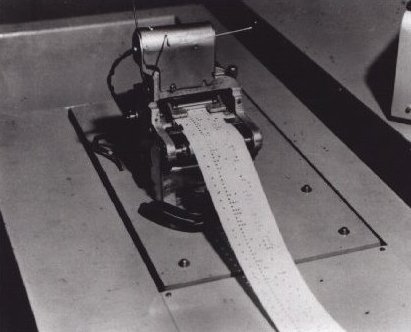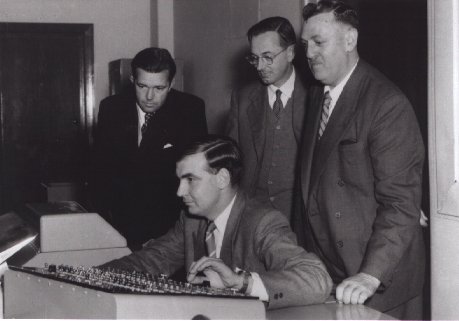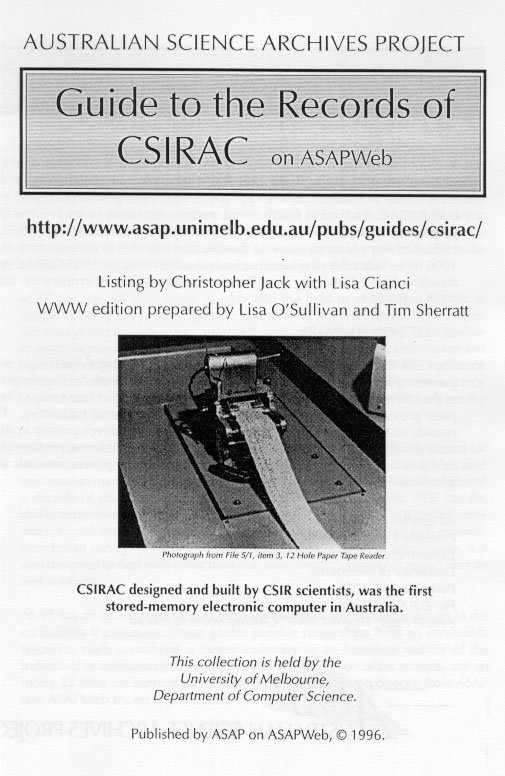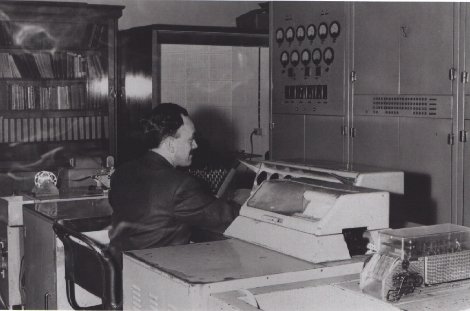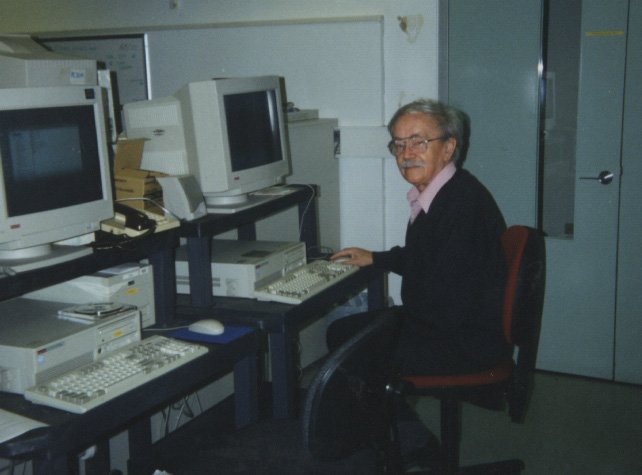This specifically relates to the versatility of the ADS because once complete, this table will be incorporated into the ADS as a Sub-Inventory level listing. It should be mentioned here that we could never have done this level of description without Jurij - his knowledge has been invaluable. And we are very lucky that we have been able to capture this knowledge now before it is lost.
Once this documentation of the records is complete, the Guide on ASAPWeb will be updated to include the new material. The point here is that we can make additions and amendments so easily with databases and web sites. Even our printed guides are only printed on demand, so we can amend or update them at any time which among other things, means that less trees will suffer from our actions.
We currently use Microsoft Access reports and macros to generate the HTML (Hyper-Text Markup Language) tags which produce the web pages. Eventually we envisage that the ADS itself will contain the programming to generate HTML on call. At present this process still involves using Microsoft Word to tidy up the report output, and also involves editing, adding extra links and scanning in of images to create the web site, although creating electronic Guides is getting easier and easier.
The images which are used in the Guide have been taken from the CSIRAC records. Once scanned onto the computer hard disk, they can be saved within the ADS, or linked to the ADS. Another possibility we are considering is to link the migrated programs and simulator to the ADS, or to the Guide on ASAPWeb so that you can search for a particular program, and then click on a button and see how a program was run on CSIRAC.
A similar thing can be done with the oral histories recorded by VAST. The magnetic tapes will be listed in the ADS as CSIRAC records, and can then be recorded digitally. Once they are in digital format, they can be put onto a server or CD ROM and linked to the Inventory in the ADS. Sound bytes can also be taken and put on the web to accompany the electronic Guide.
The electronic archival finding aid or Guide can really become a multi-media publication. Audio and Video players for internet browsers such as Netscape are either included in the software or are incredibly easy to get access to these days.
What ASAP is doing with electronic Guides is not in conflict with the development of standards for electronic finding aids. At the moment, something like SGML (Standard General Markup Language) - an ISO standard, is not really popular because few people have SGML capable browsers. With future developments, these standards may become quite common. Because data for the electronic Guide is in the ADS, we can very easily generate Guides that comply with standards like SGML in much the same way we already generate the HTML Guides at present. The data is already captured in the ADS and this only has to be done once. But the output is not limited to one particular format.
